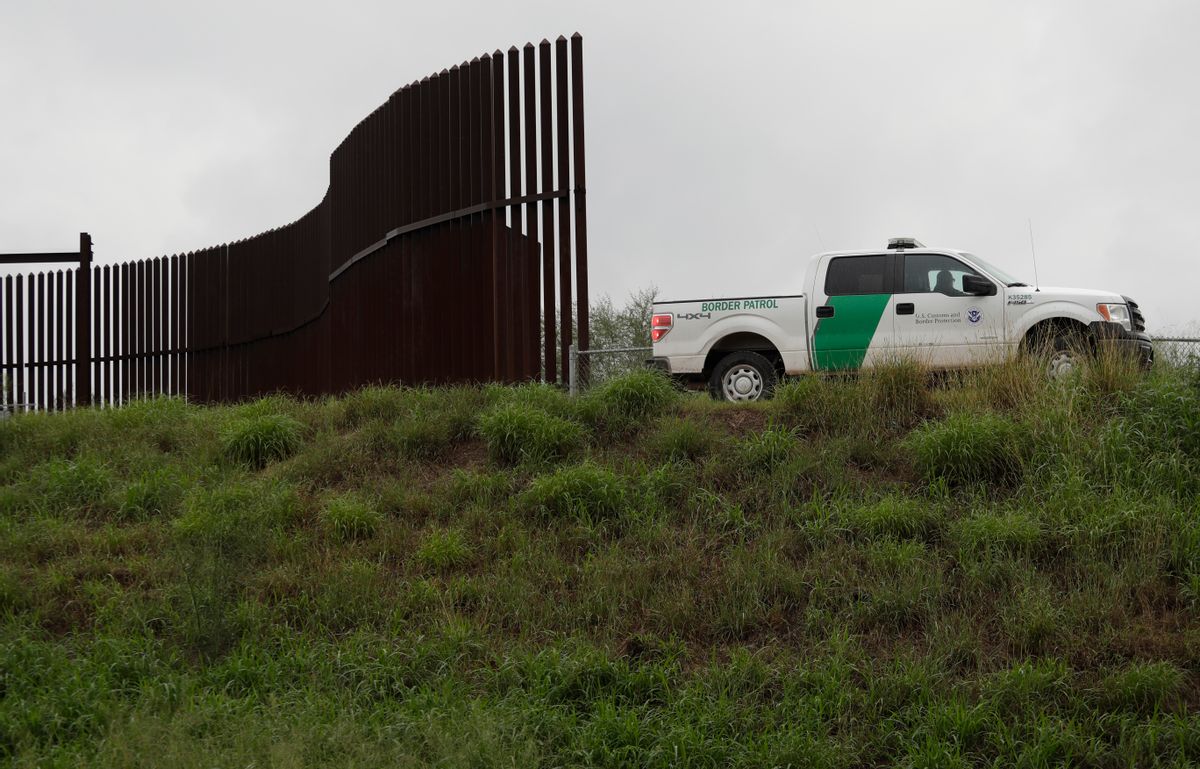History teaches us that walls don’t work.
Yet U.S. President Donald Trump is continuing to push on with his plans to construct a 3,000-kilometre barrier along the United States-Mexico border. There are eight border wall prototypes being built in San Diego, with an Oct. 26 deadline rapidly approaching to complete construction.
Archaeologists all over the world are deeply concerned by the destruction of heritage and the folly of constructing such a monumental barrier.
Given the length of the proposed wall, cultural heritage experts expect that hundreds of historic and ancient sites will be destroyed. By some estimates, when the infrastructure to build the wall is included, the project will actually amount to 15,000 kilometres of road and wall. A project of this scale substantially increases the threat to those sites.
Some have suggested it could be good for archaeology. After all, there are regulations for heritage protection in development projects in the United States as there are in Canada, and this would mean an increase in employment in the cultural resource management fields.
Not so.
An earlier construction in 2008 through the land of the Tohono O’odham Nation in southern Arizona suggests that such laws are easily circumvented by the U.S. federal government. That project was overseen by the Department of Homeland Security, which waived laws meant to protect archaeological sites, resulting in fragments of human remains being spat out by the treads of backhoes.
Walls going up everywhere
An extension of these walls would run through more Indigenous land and contravene the rights of people associated with it.
Trump’s wall is not the only mammoth barrier being constructed. They’re going up globally at a dizzying pace, and scholars from a number of fields are examining the reasons for, and implications of, border walls.
As an archaeologist who conducts research in the rural landscapes of the South American Andes, I excavate, map and think about walls often, including large-scale hilltop fortification walls. Archeologists like me have a long-term perspective on their successes.
Large-scale walls certainly act as monumental markers, highlighting on the landscape where cultures have clashed. But our work and that of colleagues around the globe suggests — despite what politicians might have us believe — that walls are no deterrent.
This point was recently explored by Cornell archaeologist Adam Smith. Smith discusses a wall in the city of Ur in modern-day Iraq in the third millennium BC, Hadrian’s wall in the UK in the first century AD and the Great Wall of China in the 14th century AD. While these walls were all impressive constructions, as no doubt Trump’s wall would be, they were also, in Smith’s words, “spectacular failures.”
Smith points out that walls are porous and can always be circumvented. As more recent walls, such as those of the West Bank or Berlin demonstrate, people will go to extremes to escape persecution, to find economic security or to reconnect with loved ones.

(Creative Commons)
The case of the existing infrastructure on the U.S.-Mexico border already proves this. This is a landscape peppered with hundreds of tunnels circumventing the existing fences and walls, and people are getting through.
The strongest existing deterrent to illegal migration is the landscape itself, as shown by Jason De León and his Undocumented Migration Project out of the University of Michigan. Like the best archaeologist, De León works to “make the invisible visible,” and he focuses attention on the movements of migrants along the Sonoran Desert of southern Arizona.
His 2015 book, "The Land of Open Graves," he draws on forensic science, linguistics, ethnography and archaeology to examine the impact of the federal government’s “Prevention Through Deterrence” program. De León follows the material remains scattered across the desert to examine the human cost of such policies, which has resulted in 2,771 deaths between January 2000 and September 2014.
Will a wall truly stop movement?
Certainly, legal and illegal population is an issue across the globe, from internal movements within African countries to the terrifying effects of the conflict in Syria.
In a year where we’ve seen legal visa holders stuck at borders, and migrants nervous about Trump crossing our own borders amid difficult conditions, it seems even more important to carefully think about the material impact of fear and xenophobia.
Archaeology may have some insight into those issues. Adam Smith reminds us politicians have long turned to walls to solve problems, yet De León and other anthropologists and archaeologists working with contemporary migration issues demonstrate that the costs of such walls can have long-term unintended consequences, including an increase in violence and insecurity. Even as walls come down like they did in Berlin, the ramifications can be long-lasting.
There are no simple answers. But if American taxpayers are going to pay for the approximately US$25 billion wall — and with the current prototypes going up, it appears that money will indeed be spent — it’s perhaps worth a more considered discussion.
![]() Will a wall check movement in North America? Or will it simply create a temporary illusion of deterrence, while destroying both historic sites and the lives of people living in the present?
Will a wall check movement in North America? Or will it simply create a temporary illusion of deterrence, while destroying both historic sites and the lives of people living in the present?
Andrew Roddick, Associate Professor of Anthropology, McMaster University



Shares